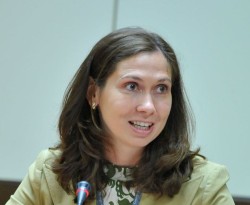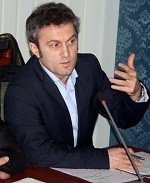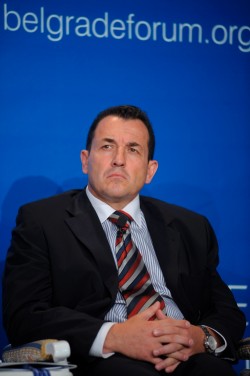Session 13: NATO Facing the Unpredictable Challenges: Is New Security Architecture Transformed Enough?
(in cooperation with the Embassy of the Slovak Republic in Belgrade, NATO Contact Point Embassy)
Over its 60 years of existence, NATO has confirmed its ability to adapt to new security environments and challenges. The period since the beginning of the 90s has witnessed the transformation of NATO from a Cold War organization into an open organization eager to enlarge, sign partnerships with a variety of countries (including its former adversaries) and conduct out of area operations, first in the former Yugoslavia and then, after 9/11, reaching a consensus to launch a more challenging operation – ISAF in Afghanistan.
All of this was accompanied through an ongoing Open Door Policy, where NATO grew to a membership of 28 Allies in 2010, with several more aspirant countries at its doorstep.
The past decade has also been marked by fast-paced technological developments and more sophisticated capabilities. This has provided challenges for NATO in modernizing the forces of its allies, keeping defence spending at 2% of GDP by the majority of its members and being ready for new mission forms with the right set of capabilities.
In 2010, NATO adopted its new Strategic Concept which defines the 3 main tasks for the Alliance: Collective Defence, Crisis Management and Cooperative Security.
3 years on, we shall take a critical look at whether NATO is indeed ready to face the new challenges of the coming decade.
Discussion topics:
- The ongoing economic and financial crisis has further deepened the existing gap in defence spending between the US and its European allies. The majority of Allies contribute under 2% of their GDP to defence. How do you see the challenges which defence spending sets for the future readiness of NATO? Can initiatives like Smart Defence really help?
- NATO’s post 2014 role: as the ISAF mission is coming to an end, voices are being raised about the future of NATO. What will NATO look like after 2014? How can it ensure that partnerships with far-away countries such as Australia, South Korea and others remain relevant? Will there be sufficient appetite amongst the Allies for a future mission of similar proportions to that in Afghanistan? What lessons can NATO learn from Afghanistan?
- In recent years, much has been said about new security challenges, including the fight against terrorism and cyber terrorism, as well as climate change, non-renewable energy supplies (water, oil, gas) and also pandemics, immigration and demographic changes. Is NATO ready to respond effectively to these challenges? And is it indeed NATO’s job?
- NATO confirmed its Open Door policy at the Chicago Summit. In the Western Balkans itself, there are several aspirant countries. What is your view on the success achieved in enlargement to date? Is NATO enlargement still interesting for candidates? Are they fully aware of both the responsibilities and the challenges of a NATO member?
Speakers:
Tomaš Valašek‚ Ambassador, Permanent Representative of Slovak Republic to NATO
Selmo Cikotić‚ Dean of the American School of Government, American University in Bosnia and Herzegovina
Erik Baktai‚ Senior Adviser, Security Policy Department, Ministry of Foreign Affairs, Hungary
Arjan Dyrmishi‚ Head of the European and Security Affairs Department, Institute for Democracy and Mediation, Tirana
Barbora Maronkova‚ Information Officer for Western Balkans, NATO (Moderator)





